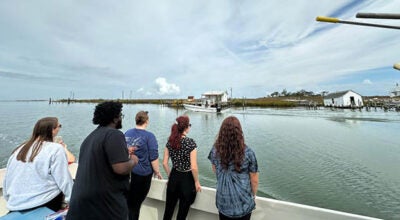The costs and value of higher education
Published 12:21 pm Friday, March 18, 2016
According to U.S. Census Data, only 24.5 percent of people older than 25 years in 1940 had completed high school. At that time, people without a high school diploma could still earn family-sustaining wages.
By the mid-1960s, more than half of all people over the age of 25 held a high school diploma, and increasingly that credential was needed to secure stable employment. Today, a high-school education isn’t enough. Employers often demand postsecondary credentials.
Many recent studies have reported that people with any level of higher education generally have a greater earnings potential than others.
Research also shows that they have better perceptions of personal health and well-being, demonstrate increased levels of volunteerism, and are more likely to vote.
Although these benefits are known, a crisis looms over America’s higher education system. Indebtedness for education loans currently totals more than $1.2 trillion. This is more than the amount owed on all credit cards combined.
It is more than the total amount owed on auto loans. In fact, student debt is the second largest category of debt in the United States. Only mortgage debt surpasses it.
Increasingly, college graduates are unable to achieve independent lifestyles or make the types of purchases (such as cars and homes) that have traditionally been associated with moving the economy forward.
Community colleges play a vital role in creating a solution. Virginia’s community colleges offer high-quality academic programs at tuition rates that are generally less than half of those charged by other types of public higher-education institutions.
Furthermore, students who can pursue their studies while still living at home save on room and board charges, and these added fees can nearly double the cost of attending a four-year college or university.
Here at Southside Virginia Community College, we offer a comprehensive array of accredited post-secondary programs that lead to Associate in Arts and Science degrees, Associate in Applied Science degrees, and other industry-recognized credentials.
For students who plan to continue an education path leading to baccalaureate and advanced degrees, SVCC simplifies the process through transfer and guaranteed admissions agreements with more than 20 other colleges and universities. Additionally, SVCC’s dual enrollment program allows high-achieving students to meet the requirements for high school graduation while simultaneously earning college credit.
For students and their families, this represents a chance to reduce future college expenses.
If you have questions about admission, visit SVCC’s website at www.southside.edu.
To learn more about financial aid solutions that do not rely on loans and indebtedness, call SVCC’s financial aid office at (855) 877-3943. For details about dual enrollment, call (434) 736-2080. Early registration for the Fall semester begins on April 1.
Dr. Al Roberts is president of Southside Virginia Community College. He can be reached via email at al.roberts@southside.edu.


